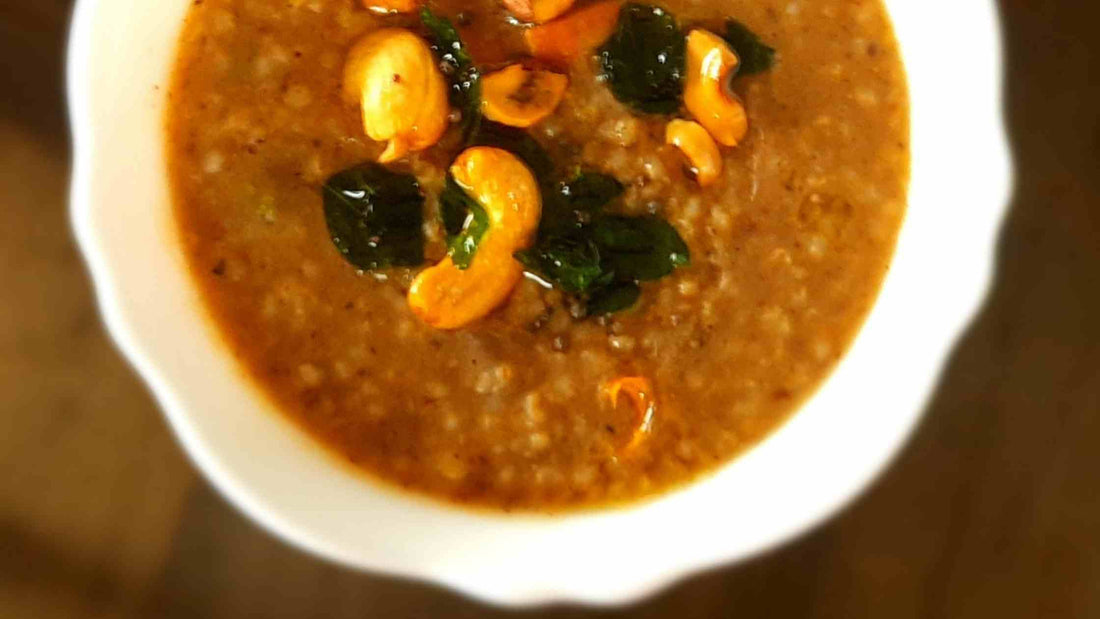
Kodo Millet - Nutrition, Benefits and Recipes
Naturally YoursShare

Kodo millet is an indigenous cereal of India and is grown today in Uttar Pradesh in the North and Kerala and Tamil nadu in the South.
It is a traditional food which closely resembles rice and helps in weight loss. It is easily digestible and is rich in phytochemicals and antioxidants which help in preventing different lifestyle diseases.
Kodo millet in different Indian languages
Kodo millet is also called as:
Kodon in hindi
Kodara in Sanskrit
Harka in kannada
Varagu in tamil and malayalam
Arikelu or arika in telugu
Kodra in Marathi, Gujarati and Punjabi
Kodo in Bengali.
Nutritional Profile

- Kodo millet is a highly nutritious grain and an excellent substitute to rice and wheat.
- It has high protein content (11%), low fat (4.2%) and very high fibre content (14.3%).
- It is very easy to digest
- It contains a high amount of lecithin and is excellent for strengthening the nervous system.
- Kodo millets are rich in B vitamins, especially niacin, B6 and folic acid, as well as the minerals such as calcium, iron, potassium, magnesium and zinc.
- The phosphorus content in kodo millet is lower than any other millet and its antioxidant potential is much higher than any other millet and major cereals.
- Kodo millets contain no gluten and is good for people who are gluten intolerant.
Health benefits of Kodo Millet
- Regular consumption of kodo millet is very beneficial for postmenopausal women suffering from signs of cardiovascular disease, like high blood pressure and high cholesterol levels.
- Weight management : Millets makes a person feel fuller faster, thus preventing overeating and eventually helps in healthy weight management. Being naturally rich in fiber, millets also help to reduce problems like constipation, flatulence, bloating and stomach cramping.
- Consuming millets helps in controlling the blood glucose level and also helps in dermal wound healing process with the help of antioxidants
- Millets are a good source of magnesium which is known to be promoting heart health. It helps to reduce blood pressure. Reducing your blood pressure and optimizing your circulatory system is one of the best ways to protect your cardiovascular health.
- Furthermore, the plant lignans of millets are prebiotic fiber. They are fermented in our intestinal gut by bacteria and converted to animal lignans. These animal lignans have been shown to protect against certain chronic diseases.
- Millets are rich in phenolic acids, phytates and tannins which are the anti-nutrients and help in reducing the risk of colon and breast cancer. Millets also have linoleic acid which contains anti-tumor activity.
- The antioxidants found in millet have beneficial impact on neutralizing the free radicals, which can cause cancer and clean up other toxins from body such as those in kidney and liver.
- It also helps in reducing joints and knee pain and helps in regularizing the menstruation cycle in woman
How to use kodo millet
Kodo millets can be used for traditional as well as novel foods. Unprocessed or processed grain can be cooked whole or ground to flour. It can be cooked as rice and also a variety of dishes like idli, dosa, pongal, khichdi, snacks, porridge, cookies, noodles etc. Due to its similarity to rice in terms of taste and texture, it can easily replace rice in a wide variety of recipes.
Here is a FREE booklet on some simple and delicious Kodo Millet Recipes.
How to cook Kodo Millet?
In an open pan :
- Wash the kodo millet twice.
- For 1 cup of kodo millet, heat 3 cups of water.
- When the water starts to boil, add the kodo millet.
- Mix well and add a teaspoon of oil.
- Cover and cook till all the water is absorbed. Toss it once or twice in the middle.
- It will take around 10-13 minutes for getting cooked perfectly.
- Switch off the flame and let it sit for ten more minutes.
- Fluff it up with a fork, and the cooked Kodo millet is ready to use.
How to cook in Pressure cooker :
- For cooking in pressure cooker, wash the millet and drain the excess water.
- Add millet, water (2 cups of water for 1 cup of millet), and 1 tsp of oil in a vessel and keep it in the pressure cooker.
- Close the lid and cook for 3 whistles on medium-high flame.
- Once done, take it out of the heat and let the pressure release naturally.
- Once the pressure is released, fluff it up with a fork.
A Simple Recipe
Kodo Millet Bisi Bele Bath

Ingredients
For Bisi Bele Bath powder
4 Dried red chillies
1 inch cinnamon
2 cloves
1 Tsp cumin
1 Tsp urad dal
1 Tsp chana dal
2 pinches fenugreek seeds
1 ½ Tbsp coriander seeds
1 Tbsp dried coconut
For Bisi Bele Bath
¾ cup Kodo Millet
½ cup toor dal
Small lemon sized tamarind
1 ½ Tsp jaggery powder
Salt to taste
1 Tsp ghee
1 ½ cups chopped vegetables like carrot, peas, beans, capsicum
10 shallots (small onion)
Tempering
1 – 2 Tbsp ghee
1 Sprig curry leaves
10 cashew, broken
A pinch of asafetida
½ Tsp mustard
Method
- On a low flame, dry roast all the ingredients mentioned under the bisi bele bath powder. When aromatic, remove it from flame. Then cool the mixture and grind to a fine powder.
- Wash the kodo millet and toor dal separately. Add 2 cups of water to millet and 1 cup of water to the dal.
- Pressures cook them for 3-4 whistles so that both are cooked soft.
- In the meantime, soak the tamarind and extract its water. To this add the bisi bele bath powder, jaggery and salt.
- Heat 1 Tsp ghee in a pan and add the shallots and chopped vegetables.
- After a few minutes, add the tamarind water and allow it to boil for a few minutes.
- Then add the cooked kodo millet and dal. Mix well and let it come to a boil on a medium flame.
- Check the taste and add salt if required. Cook till it reaches the desired consistency and remove from flame.
- Heat 1 or 2 Tsp of ghee and add the ingredients mentioned under the seasoning. Pour the seasoning over the bisi bele bath.
- Add a dollop of ghee before serving.

1 comment
It’s wonderful experience with this amazing grain.Wondering why we were not knowing about it till now.So please keep us enlightening. Thanking you sincerely!!